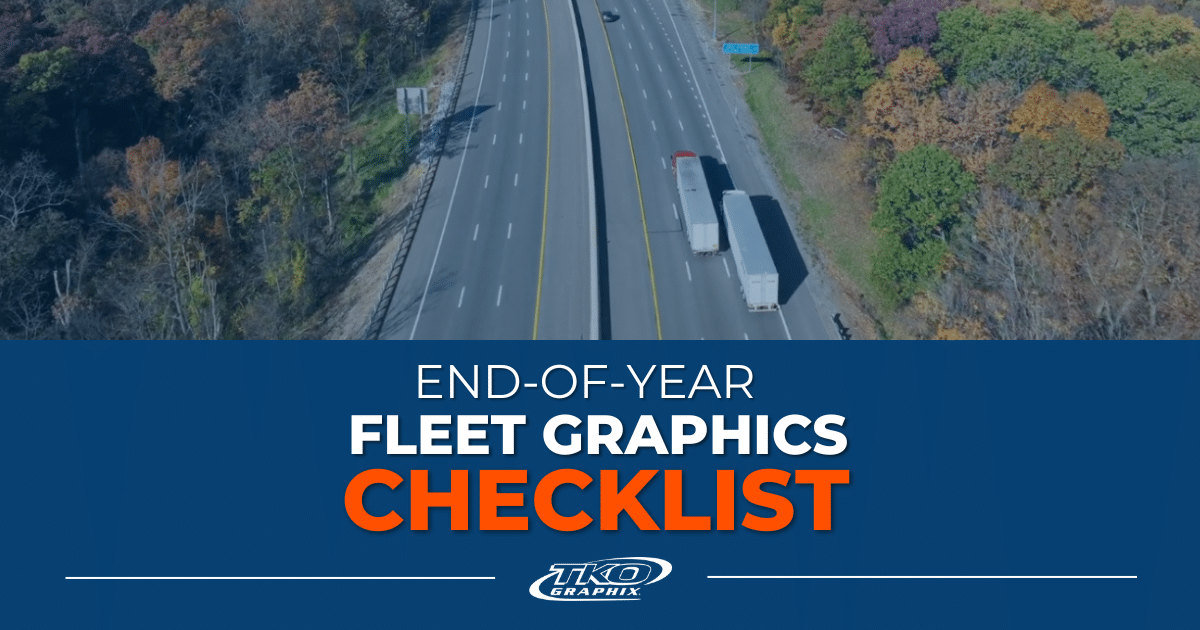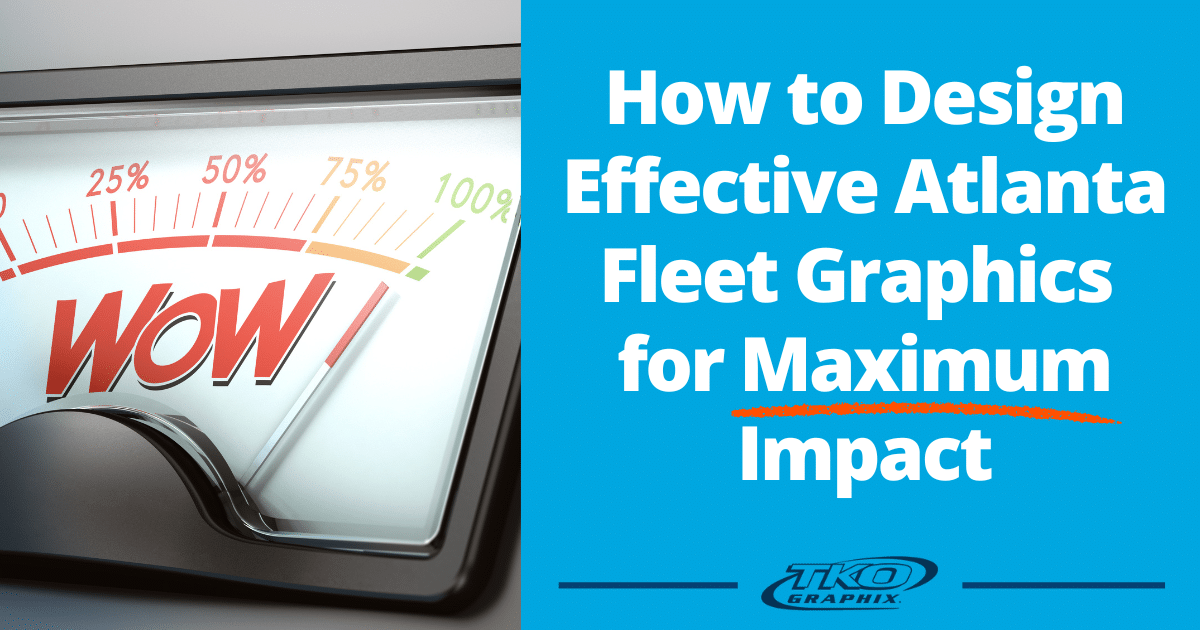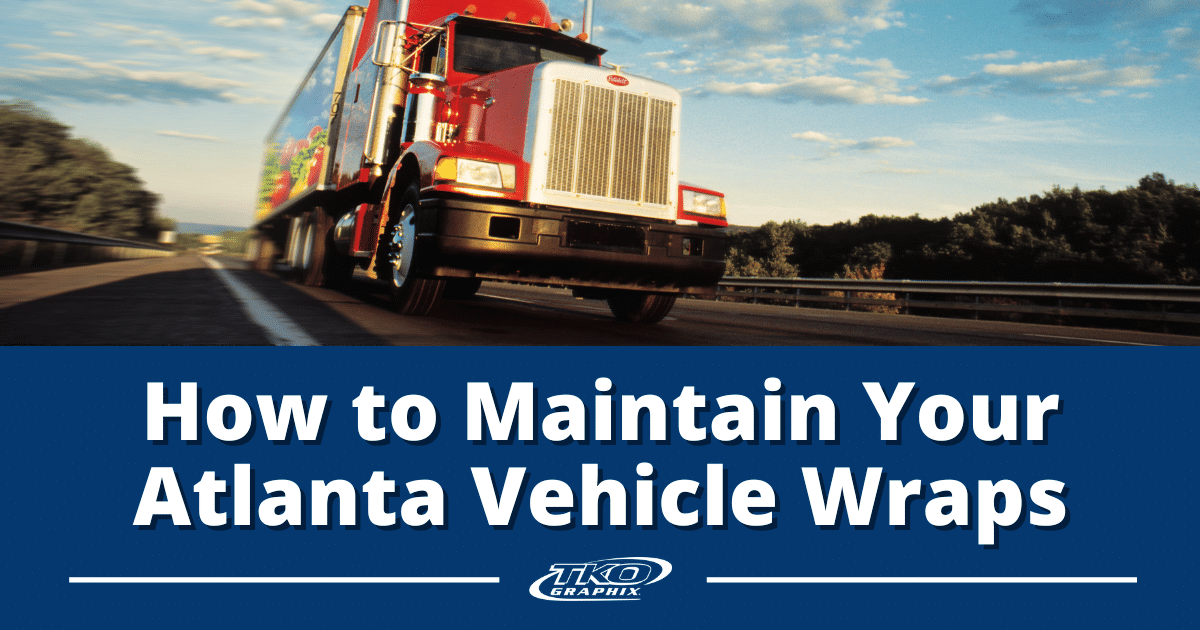When a business picks up a newly wrapped car, truck, or trailer— they’re so proud. We see it all the time! New adhesive vinyl graphics are bright, shiny, and can make even a plain vehicle stand out. However, like anything, a new wrap eventually ages, and it can show. Today, we talk about the 4 best ways to add life of your fleet graphics by using these best practices.
The 4 Best Ways to Add Life to Your Fleet Graphics
1. Use the Best Material and the Right Material
If you want to add life to your fleet graphics begin by using the best material for your vehicle. The cheapest is seldom the best in anything. We all know this is true, and yet, many fleet customers come to us looking for the most inexpensive material. The truth is the lowest price isn’t always the least expensive and can cost you in the long run.
For example, a calendered vinyl is manufactured for use on flat surfaces or simple curves only. This method of manufacturing is less expensive so, the vinyl is less expensive. However, calendered vinyl film doesn’t conform to complex curves and will fail if applied to those types of surfaces.
The Two Types of Vinyl
There are two main types of vinyl materials used for wrapping vehicles and other large format graphics, cast vinyl and calendered vinyl films. Both types of vinyl begin as Polyvinyl Chloride (PVC), then additives are used to create the vinyl film.
Cast vinyl, or “premium vinyl,” is a process similar to making a cake. The mixed ingredients are baked, allowing the solvents to evaporate which produces a very flexible, thin, shrink-resistant material. The process includes plasticizers for flexibility and pigment for color. UV absorbers and heat stabilizers create a vinyl that will conform to a vehicle’s shape and withstand the elements.
On the other hand, calendered vinyl material is thicker, and when stretched, it tends to shrink so it performs best on flat surfaces or simple curves. The manufacturing process of calendered vinyl is less involved and the vinyl tends to be less expensive.
A new customer came to us because their 53’ trailer warp, completed by another vehicle graphics company, was coming apart. The provider had previously installed decals for them, and the decals were fine. However, the wrap had started coming apart at the seams. The provider had used a noncompliant material designed for flat decals, not curves. A full wrap requires a compliant cast material that can be heated, formed around curves, and will keep seams together. Noncompliant material is less expensive, but if used for the wrong application costs the customer more in the long run.
2. Use a Vinyl Overlaminate
Ultraviolet light is one of the most significant contributors to the aging of adhesive vinyl fleet graphics. Over time unprotected graphics can be ruined by the sun. Colors such as red, that absorb UV rays at a higher concentration than most other colors, are more susceptible to fading. Horizontal surfaces, such as hoods and roofs, receive more direct sunlight than vertical surfaces causing them to also fade quicker.
A protective coating or overlaminate can slow the fading process and add life to your fleet graphics. Instead of your red vinyl-wrapped truck turning pink on the hood, the UV protection in the overlaminate can slow the fade to an almost undetectable degree of fading.
Overlamination of adhesive vinyl graphics helps protect the vehicle graphics from UV rays, acid dew, and road debris. Using and overlaminate on the material is recommended by manufacturers, such as 3M.
3. Use Installation Best Practices
Improper installation is one of the most common causes of early fleet graphics failure. Not knowing how to wrap diverse surfaces, such as rivets on a 53’ trailers, improperly preparing the substrates prior to installation, or installing in poor climate conditions, all lead to the early failure of fleet graphics. If you want to add life to your fleet graphics hire professional, certified installers.
It should be spotless and undamaged
To avoid potential adhesive failure, inspect paint condition, damage such as dents or rust, as well as seals and gaskets. Adhesive vinyl graphics will not adhere to worn out or damaged substrates, nor will it “hide” or camouflage pre-existing damage.
The vehicle should be spotless. Debris remaining on the vehicle, regardless how small, may show through when the vinyl is applied, and oils and other films can lead to adhesive failure. The final wipe down should be with isopropyl alcohol, and then dry the vehicle before installation.
Vehicle graphic installation certification
There are two recognized vehicle graphics application certification programs. PDAA (Professional Decal Application Alliance), which is administered by SGIA (Specialty Graphics Imaging Association), and UASG (United Application Standards Group), through 3M. Both involve continuous training and testing, and both certify varying levels of certification. For example, PDAA offers both basic and master certification. According to PDAA, “Basic certification accommodates companies that have absolutely no interest in doing vehicle wraps with complex curves.” If you want to avoid problems with your installation be certain that you have a vinyl application team certified for the type of installation required.
Where are the best installers?
How to Find the Best Vehicle Graphics Installers isn’t one size fits all. You want to find experienced and certified installation teams that fit your needs. For example, as we mentioned, a full wrap with complex curves takes a much higher level of training than applying a decal on a flat area such as a door. Another consideration is how long the company has been in business and the tenure of the installation team.
4. Keep it Clean
Another key to adding life to your fleet graphics is keeping it clean. Many people don’t realize the importance of keeping adhesive vinyl graphics clean. Contaminants can and will damage vinyl graphics. For example, organic pollutants such as bird droppings and insect parts left on too long not only look bad but also damage the vinyl. Fuel spills, road salt, and atmospheric pollutants can fade the vinyl, dry it out, and make it brittle.
Rinse it off!
3M™ shares this advice about caring for your vehicle graphics:
- Wash regularly whenever the car appears dirty. Contaminants allowed to remain on the graphic may be more difficult to remove during cleaning. Rinse off as much dirt and grit as possible with a spray of water.
- Use a wet, non-abrasive detergent such as 3M™ Car Wash Soap 39000 or Meguiar’s NXT Generation® Car Wash or Deep Crystal® Car. Wash and a soft, clean cloth or sponge.
- Rinse thoroughly with clean water. To reduce water spotting, immediately use a silicone squeegee to remove water and finish with a clean, soft rag.”
For later reference, here the full PDF from 3M™ for download, Caring for Your Vehicle Graphics
Protect Your Investment
Fleet graphics are an investment that can pay for itself over and over again, but you want to do your part to protect your investment. You can do this when you the take steps to add life to your fleet graphics. So, use the right material, use an overlaminate for UV protection, hire the best installation team, and keep your fleet clean.
TKO Graphix can select the right material for your fleet graphics or other graphics projects. One of our top priorities is quality graphics for our customers so we don’t upsale material. We always choose the best material for the project.
Request a Quote for fleet graphics today! If we can answer any questions, please, Contact Us.







